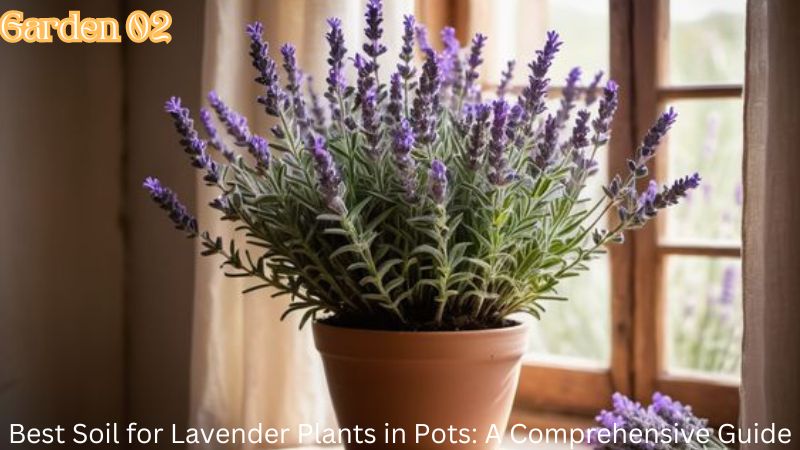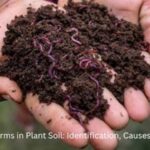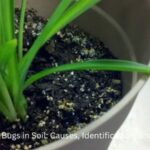Gardening
Best Soil for Lavender Plants in Pots: A Comprehensive Guide
Lavender plants are widely beloved for their fragrant blooms, hardy nature, and versatility in both gardens and containers. Growing lavender in pots is especially popular among gardeners with limited space, urban dwellers, or those looking to add a touch of elegance to patios and balconies. However, to ensure that your potted lavender thrives, choosing the best soil for lavender plants in pots is critical.
Lavender is a plant native to the Mediterranean region, where the soil is often poor, dry, and well-drained. To replicate these conditions in a container, you need to create an optimal soil mix that supports the unique needs of the plant. In this article, Garden 02 will explore the ideal soil composition for potted lavender, the importance of proper drainage, and how to care for lavender in containers to ensure healthy growth and abundant blooms.
1. Understanding Lavender’s Soil Needs
Lavender plants are highly adaptable but have specific soil requirements, particularly when grown in pots. In its natural habitat, lavender grows in rocky, alkaline soils with excellent drainage and low fertility. Understanding the plant’s natural preferences will help you select the best soil mix for growing lavender in containers.
1.1. Well-Draining Soil
The most critical requirement for lavender is well-draining soil. Lavender roots are highly susceptible to root rot and other fungal diseases when exposed to waterlogged conditions. In containers, water can easily become trapped if the soil does not drain properly, making it essential to choose a soil mix that allows excess water to flow freely.
1.2. Sandy or Gritty Texture
Lavender prefers a sandy or gritty soil texture that mimics the rocky environments of its native habitat. Sandy soils promote good drainage and aeration, preventing the roots from sitting in water. Additionally, a gritty texture allows the roots to spread easily through the soil, promoting healthier root development.
1.3. Low Fertility
Unlike many garden plants, lavender thrives in poor, low-fertility soils. Too much organic matter or fertilizer can lead to leggy growth and fewer blooms. For this reason, you should avoid using rich, nutrient-dense potting mixes that may overwhelm the plant with excess nutrients.
1.4. Alkaline pH
Lavender plants prefer a slightly alkaline soil, with a pH range of 6.5 to 8.0. If the soil is too acidic, lavender will struggle to absorb the necessary nutrients. Adjusting the pH of your potting mix to match lavender’s alkaline preferences is a crucial step in promoting healthy growth.
2. Choosing the Best Soil for Lavender in Pots
When selecting or creating the best soil for lavender in pots, it’s important to balance good drainage, a sandy texture, low fertility, and an appropriate pH level. Here are some key soil components to consider:
2.1. Commercial Potting Mix
A high-quality commercial potting mix can be an excellent base for growing lavender in pots. However, standard potting soil alone may retain too much moisture for lavender’s liking. To improve drainage, mix the potting soil with additional amendments (such as sand, perlite, or gravel) to achieve the right texture and drainage properties.
Look for potting mixes that are formulated for cacti and succulents, as these blends are often more porous and drain faster than traditional potting mixes. A cactus mix can be a good starting point for lavender, but it should still be amended with sand or gravel for optimal results.
2.2. Sand or Grit
To achieve the proper drainage and texture for lavender, you’ll need to mix sand or grit into your potting mix. Horticultural sand or coarse builder’s sand is ideal for improving drainage and preventing the soil from compacting around the lavender’s roots.
A good rule of thumb is to combine 1 part sand or grit with 2 parts potting soil. This will create a well-aerated, fast-draining medium that closely mimics lavender’s natural growing environment.
2.3. Perlite or Vermiculite
Perlite and vermiculite are lightweight soil amendments that can enhance drainage and aeration in potted plants. Perlite, in particular, is excellent for increasing the porosity of the soil and preventing compaction.
When adding perlite to your lavender potting mix, use approximately 1 part perlite to 3 parts potting soil. This will ensure that the soil remains light and well-drained, reducing the risk of root rot.
2.4. Gravel or Small Stones
Incorporating gravel or small stones into the bottom of your pot can further improve drainage for potted lavender. While these materials are not necessary in the actual soil mix, they can be used to line the base of the pot, allowing water to escape more easily.
If you choose to use gravel or stones, make sure they are small enough to create gaps between the particles, allowing water to flow through and out of the drainage holes at the bottom of the container.
2.5. pH Adjustments: Lime for Alkalinity
If your potting mix is too acidic, you can adjust the pH by adding garden lime or dolomitic lime. These amendments will raise the pH of the soil, making it more alkaline and suitable for lavender.
Be sure to follow the manufacturer’s instructions for applying lime, as over-application can lead to excessively alkaline soil. It’s also a good idea to test the pH of your potting mix before adding lime to ensure that it falls within the optimal range for lavender (6.5 to 8.0).

3. How to Pot Lavender: Step-by-Step Guide
Once you’ve selected or created the best soil for your lavender, it’s time to pot your plant. Follow these steps to ensure a successful lavender planting:
3.1. Choose the Right Container
Select a container with good drainage, as proper drainage is essential for preventing root rot. Terracotta pots are an excellent choice for lavender, as they are porous and allow excess moisture to evaporate. Ensure that the pot has several drainage holes at the bottom to allow water to escape.
Lavender plants prefer to be slightly root-bound, so choose a pot that is only a few inches larger than the root ball of the plant. Too large a pot can lead to excessive moisture retention in the soil, which is detrimental to lavender.
3.2. Prepare the Pot
Before adding soil, line the bottom of the pot with a layer of small stones or gravel to improve drainage. This step is particularly important if you’re using a pot without many drainage holes.
3.3. Mix the Soil
In a separate container, combine your potting soil, sand or grit, and any additional amendments like perlite or lime. Aim for a mix that is light, well-draining, and slightly gritty in texture.
3.4. Plant the Lavender
Place your lavender plant in the pot, ensuring that the top of the root ball is level with the surface of the soil. Fill in around the plant with your soil mix, pressing lightly to secure the plant in place.
Avoid covering the crown of the lavender with soil, as this can lead to rotting. The crown should remain exposed to the air.
3.5. Water Sparingly
After planting, water the lavender thoroughly to settle the soil around the roots. However, be cautious not to overwater. Lavender prefers dry conditions, and too much water can quickly lead to root rot in containers.
Moving forward, allow the soil to dry out between waterings. Water only when the top inch of soil feels dry to the touch. In colder months, when lavender enters dormancy, reduce watering even further.
4. Caring for Potted Lavender
Growing lavender in pots is relatively low-maintenance, but there are a few key care tips to keep in mind to ensure your lavender plants thrive.
4.1. Sunlight
Lavender is a sun-loving plant that requires at least 6 hours of full sunlight per day. Place your potted lavender in a sunny spot, such as a south-facing balcony, patio, or window ledge. If you’re growing lavender indoors, use grow lights to supplement natural light if necessary.
4.2. Pruning
Pruning is essential for maintaining the health and shape of lavender plants. After the first bloom, trim back the spent flower stems and shape the plant to encourage new growth. Avoid cutting into the woody part of the plant, as this can inhibit regrowth.
In early spring, give your lavender a light trim to encourage fuller growth and more abundant blooms in the upcoming season.
4.3. Fertilizing
Lavender does not require frequent fertilization, and in fact, too much fertilizer can lead to excessive foliage growth at the expense of flowers. A light application of a balanced, slow-release fertilizer in the spring is sufficient for potted lavender.
If you prefer organic options, a diluted fish emulsion or compost tea can provide gentle nourishment without overwhelming the plant.
4.4. Temperature and Protection
Lavender is a hardy plant but may need protection during colder months, especially in pots. If you live in an area with harsh winters, consider moving your potted lavender indoors or into a sheltered location to protect it from freezing temperatures. While lavender is drought-tolerant, it is not cold-tolerant, and potted plants are more vulnerable to frost than those planted in the ground.
Alternatively, you can wrap the pot in insulating material and add a layer of mulch to the soil surface to provide extra protection against cold.





